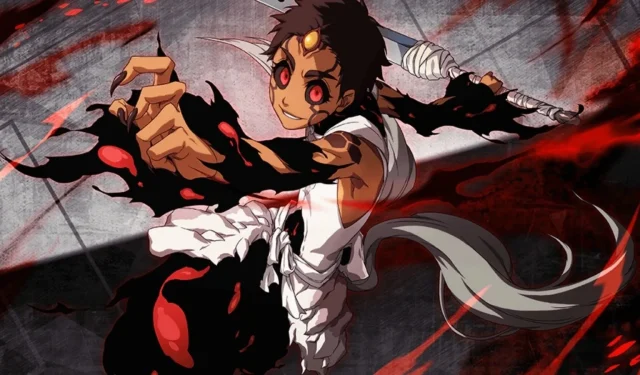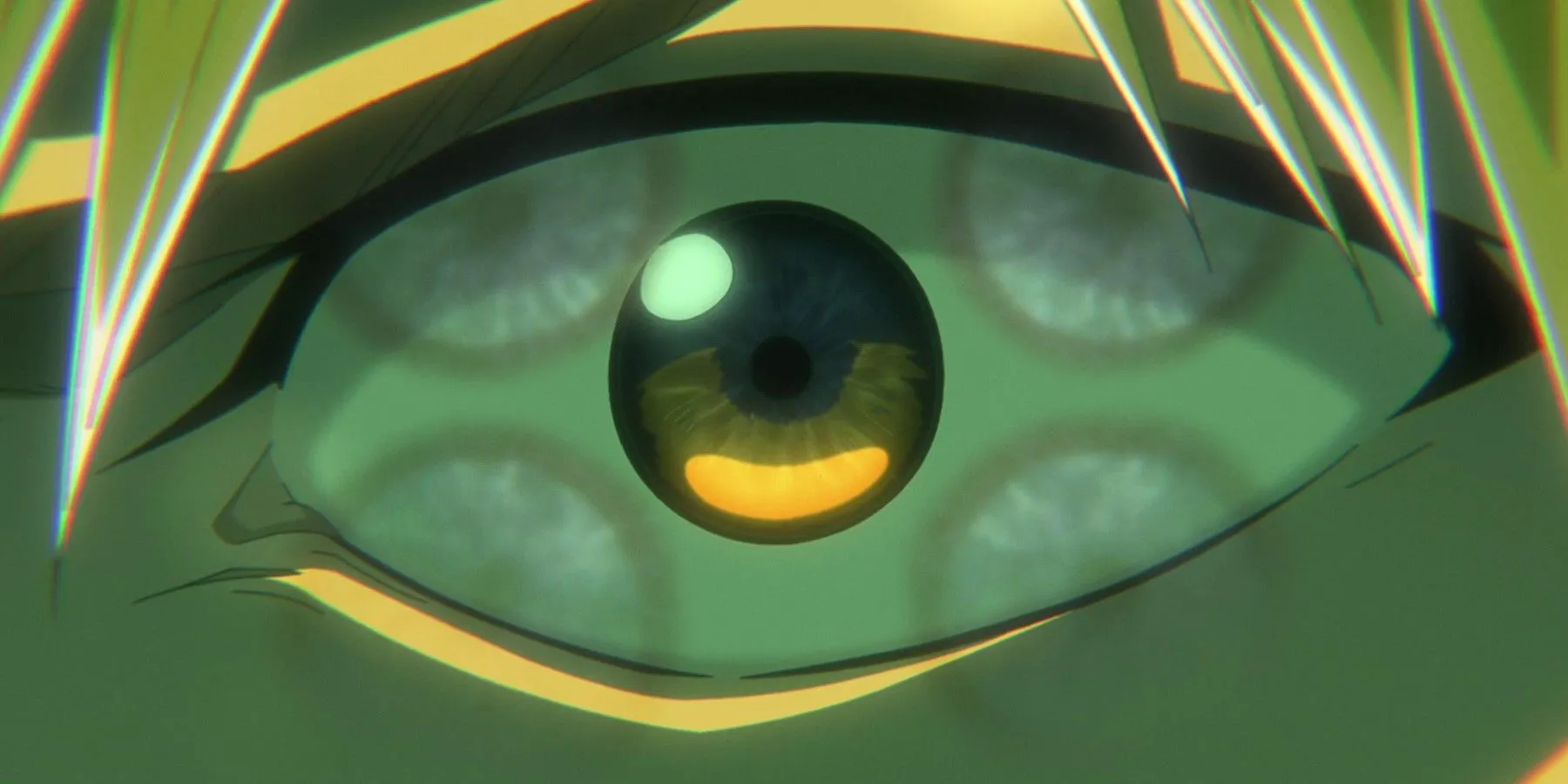
Essential Insights
- Tokinada Tsunayashiro’s schemes unveil the Soul Society’s sinister truths, prompting efforts to destabilize its authority.
- Hikone Ubuginu, a unique being, was artificially engineered by Tokinada in a bid for the title of the new Soul King.
- Hikone’s Resurrección boasts diverse abilities drawn from various races, with the goal of consuming the Soul King.
The Can’t Fear Your Own World series by Ryohgo Narita enriches the lore of BLEACH, shedding light on one of the original five Great Noble Families and expanding on the series’ cosmological elements concerning the Soul King’s true nature.
The introduction of Tokinada Tsunayashiro, the main antagonist of this trilogy, along with his enigmatic companion, Hikone Ubuginu, discloses a wealth of previously unexplored aspects of the BLEACH universe, including insights from its earlier history. So, who exactly is Hikone Ubuginu, and what role do they play in the BLEACH narrative?
A Remarkable Existence
A True Hybrid

Tokinada Tsunayashiro, belonging to a notable branch of the Tsunayashiro Clan, one of Soul Society’s esteemed Four Great Noble Families, carried out a series of calculated murders to ascend as the clan leader, thus gaining command over the Visuals and Surveillance Department. This position granted him access to top-secret records unveiling the deepest, darkest truths of Soul Society, including the Shinigami’s original wrongdoing.
After uncovering the distorted notions of justice upheld by the Shinigami, who risked their lives for an illusion, Tokinada concluded that deception, cruelty, and violence were essential traits for a Shinigami. His subtle influence is profoundly impactful—he is the Shinigami whom former 9th Squad Captain Kaname Tōsen recalls for the murder of his dear friend Kakyō, who was slain by her husband, a protected member of the Four Great Noble Families.
This individual also orchestrated the wrongful accusations against former Xcution leader Ginjō Kugo for the deaths of innocent Shinigami. Tokinada discovered that Fullbringers were not merely those whose mothers encountered Hollows during pregnancy—exposing the unborn to Hollow reiatsu—but rather, individuals whose souls carried fragments, or “Nails,”of the Soul King himself.
In his ambitious quest, Tokinada enlisted the help of several skilled individuals, including Seinosuke, the elder brother of 4th Squad’s 3rd Seat Hanatarо̄ Yamada; he was a former lieutenant with superior Kidō abilities. He also collaborated with Aura Michibane, a Fullbringer leading a cult originating from Xcution, to create an artificial hybrid soul using the souls of numerous Shinigami, Hollows, Quincies, and Fullbringers. Initially unstable, this artificial soul reached its potential during the Thousand-Year Blood War when Tokinada accessed the brain of the Sternritter V, Gremmy Thoumeaux. This culminated in the emergence of Hikone Ubuginu—an androgynous, cheerful entity reminiscent of the series hero Ichigo Kurosaki, and a key figure within the Tsunayashiro Clan.
Candidate for Soul King
Tokinada’s Ambition: Creating Hikone to Supplant the Soul King

The diverse amalgamation of souls within Hikone was driven by Tokinada’s ambition to usurp the current order and position him as the new Soul King. The incorporation of several Fullbringers, particularly those tied to Ginjo, allows various fragments of the Soul King to coalesce within Hikone, creating a unique expression distinct from Ichigo’s.
This uniqueness arises from the Soul King fragments possessing reality-altering powers, akin to those of the Hogyoku, propelling them down an entirely different path as a hybrid being. Hikone’s Zanpakutō, Ikomikidomoe, originates from an ancient Hollow whose power was deemed too potent to purify in the usual manner, leading Ichibē Hyōsube to rename it with his own Zanpakutō, Ichimonji.
Hikone is uniquely capable of wielding Ikomikidomoe, a hybrid weapon that is not your conventional Asauchi-turned-Zanpakutō. Tragically, the greedy nature of the Hollow ultimately consumes a significant portion of Hikone’s reiatsu in pursuit of its voracious ambition—the same ambition that led to its downfall. Long ago, this Hollow sought to devour the Soul King, and thus, Tokinada bestowed upon his creation a Zanpakutō born from this greed, uniting two hybrid forces intricately linked to the Soul King.
The Abilities of Hikone Ubuginu
Overcoming Boundaries

Upon activating their Resurrección, Hikone’s appearance transforms, becoming increasingly Hollow-like, and the Zanpakutō reveals various powers according to the used activation phrase. Hikone possesses a range of Hollow abilities, including Sonido, Hierro, Gran Rey Cero, and rapid regeneration, in addition to the vast arsenal of Quincy and Fullbringer techniques such as Blut Vene, the ability to manifest a Heilig Bogen, reishi manipulation, and Bringer Light usage. Hikone displays astonishing mastery of these opposing powers, often merging them to create devastating effects, for instance, combining arrow barrages from their Heilig Bogen with Cero or blending Blut Vene with Hierro.
Alongside immeasurable reiatsu resulting from their unique makeup, Hikone boasts exceptional battle instincts and a proclivity for confrontational strong adversaries, an influence stemming from Gremmy’s intellect. Throughout the narrative of Can’t Fear Your Own World, Hikone successfully faces off against numerous formidable rivals, including Kenpachi Zaraki (who has since achieved his Bankai), Neliel Tu Odelshwanck, Candice Catnipp, Luppi Antenor, Tier Harribel, and Grimjow, among others. Their Resurrección, titled Ikomikidomoe Hō’ōraku Hakkei, exquisitely encapsulates the narrative’s themes. The translation of this name, referencing the Eight Views of the Fall of the Phoenix, showcases the complete title of the Zanpakutō. The term “Ikomikidomoe”is derived from a Japanese yojijukugo, a four-character idiom, combined with “-tomoe,”a term for a Japanese comma.
The Pinnacle of Resurrection
The Sun-Swallower

“Ikomiki”translates to “similarity,”while the 巴 character at the end of the name evokes a “ba,”a massive snake, as part of the idiom “bā shé tūn xiàng”—the snake consuming the elephant; a metaphor for insatiable greed. This history as a Hollow exemplifies Ikomikidomoe’s ancient desire to consume the Soul King. The complete title, Ikomikidomoe Hō’ōraku Hakkei, translates to an invocation of the Fenghuang (known in Japanese as Hō’ō), a mythical phoenix whose rare appearance signals harmony during the ascent of a new emperor or era in Chinese mythology.
Symbolizing a profound syzygy—the balanced union of masculine and feminine principles (which aligns with the genderless nature of Hikone)—the full name implies “That Which Consumes Those Like Itself.”The “Eight Views”aspect draws from the auspiciousness of the number eight in Buddhism, referencing the Noble Eightfold Path—guidelines leading to liberation from the cycle of reincarnation—or the Ashtamangala, eight auspicious symbols associated with enlightenment across various Eastern religions.
The concept of “Eight Views”also resonates with East Asian cultural significance related to the eight most picturesque sights in a region, echoing the metaphorical fortune linked to the number eight. Therefore, “Ikomikidomoe Hō’ōraku Hakkei”can be understood as “That Which Consumes Those Like Itself, Eight Picturesque Views of the Fenghuang’s Decline,”where the Fenghuang represents the gender-neutral Soul King, symbolizing the yearning of Ikomikidomoe to absorb the Soul King—an event that not only heralds its own obliteration but also a return to chaos. This character parallels Apep from Egyptian mythology—the serpent that devours the sun, symbolizing complete annihilation of the life-giving force and the subsequent abandonment of any aspiration for enlightenment precipitated by insatiable gluttony; greed that ultimately obstructed its purification by traditional means, compressing the millions of souls it absorbed from partaking in the reincarnation cycle.




Leave a Reply